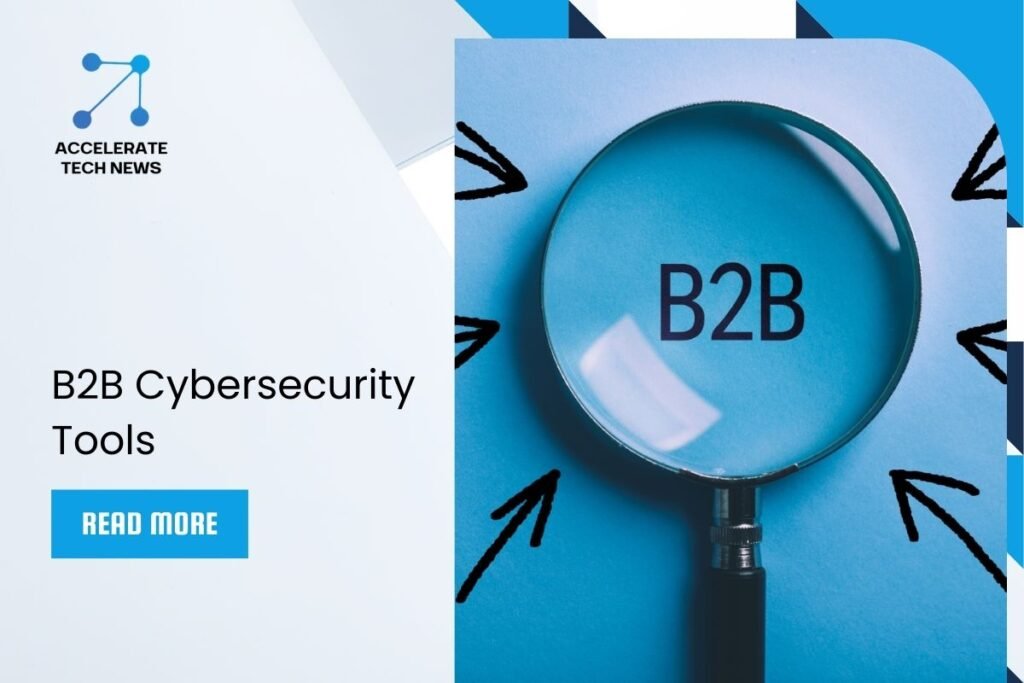
As we move into 2025, the digital landscape continues to evolve, presenting new challenges and threats to businesses. With cyberattacks becoming more sophisticated, investing in the right B2B cybersecurity tools is crucial for protecting sensitive data and maintaining operational integrity. This guide explores the top cybersecurity tools available for businesses in 2025, highlighting their features, benefits, and how they can help organizations navigate the complex world of cybersecurity. Whether you’re a small startup or a large enterprise, understanding these tools is essential for safeguarding your business.
Understanding B2B Cybersecurity Tools
B2B cybersecurity tools are specialized software solutions designed to protect businesses from cyber threats. These tools help organizations monitor their networks, detect vulnerabilities, and respond to incidents effectively. With the rise of remote work and cloud computing, the need for robust cybersecurity measures has never been more critical.
Key Components of B2B Cybersecurity Tools
- Threat Detection: Identifying potential security breaches before they escalate.
- Data Protection: Ensuring sensitive information is secure from unauthorized access.
- Risk Management: Assessing and mitigating risks associated with cyber threats.
- Compliance Monitoring: Ensuring adherence to industry regulations and standards.
The Importance of Cybersecurity Solutions
Investing in effective cybersecurity solutions is essential for several reasons:
- Protecting Sensitive Data: Businesses handle vast amounts of sensitive information, including customer data, financial records, and proprietary information. Cybersecurity tools help safeguard this data from breaches.
- Maintaining Customer Trust: A single data breach can damage a company’s reputation and erode customer trust. Implementing robust security measures demonstrates a commitment to protecting client information.
- Regulatory Compliance: Many industries are subject to strict regulations regarding data protection. Failing to comply can result in hefty fines and legal repercussions.
- Operational Continuity: Effective cybersecurity measures minimize downtime caused by cyber incidents, ensuring that business operations continue smoothly.
Key Features of Effective Security Software
When evaluating security software, consider the following key features:
- Real-Time Monitoring: Continuous monitoring of network traffic helps detect suspicious activity as it happens.
- Automated Threat Detection: Advanced algorithms can identify potential threats based on patterns and anomalies in data.
- User-Friendly Interface: Intuitive interfaces make it easier for teams to navigate and utilize the software effectively.
- Integration Capabilities: The ability to integrate with existing systems enhances overall security management.
- Reporting and Analytics: Comprehensive reporting tools provide insights into security incidents and system performance.
Top B2B Cybersecurity Tools for 2025
Here are some of the best B2B cybersecurity tools that companies should consider adopting in 2025:
AI-Powered Threat Detection Tools
AI-powered threat detection tools leverage machine learning algorithms to analyze large volumes of data in real-time. These tools can identify patterns indicative of cyber threats that traditional methods might miss.
Benefits:
- Faster detection of anomalies.
- Reduced false positives through advanced algorithms.
- Continuous learning capabilities that adapt to new threats.
Data Protection Solutions
Data protection solutions focus on securing sensitive information through encryption, access controls, and data loss prevention strategies.
Key Features:
- Encryption of data both at rest and in transit.
- Role-based access controls that limit who can view or edit sensitive information.
- Regular audits to ensure compliance with data protection regulations.
Risk Management Software
Effective risk management software helps organizations assess vulnerabilities within their systems and prioritize remediation efforts based on risk levels.
Benefits:
- Comprehensive risk assessments that identify potential weaknesses.
- Automated reporting features that simplify compliance documentation.
- Integration with other security tools for a holistic approach to risk management.
Security Information and Event Management (SIEM)
SIEM solutions collect and analyze security data from across an organization’s network in real-time. This allows security teams to detect suspicious activities quickly and respond effectively.
Key Features:
- Centralized logging of security events.
- Correlation of events across different systems for comprehensive analysis.
- Automated alerts for potential security incidents.
Emerging Technologies in Cybersecurity
As technology continues to evolve, several emerging technologies are shaping the future of cybersecurity:
Zero Trust Architecture
Zero Trust is a security model that assumes no one inside or outside the organization can be trusted by default. Continuous verification is required for every user or device attempting to access resources within the network.
Key Features:
- Micro-segmentation: Dividing networks into smaller segments with individual security controls.
- Least Privilege Access: Ensuring users have only the minimum necessary access rights.
- Continuous Monitoring: Regularly verifying user identities and device health before granting access.
Extended Detection and Response (XDR)
XDR integrates multiple security products into a cohesive system that provides enhanced visibility across various environments—cloud, on-premises, or hybrid setups—allowing for better threat detection and response capabilities.
Benefits:
- Improved incident response times through centralized visibility.
- Enhanced analytics capabilities that correlate data across multiple sources.
- Streamlined operations by reducing reliance on multiple disparate tools.
Best Practices for Implementing Cybersecurity Tools
To maximize the effectiveness of your B2B cybersecurity tools, consider these best practices:
- Conduct Regular Security Audits: Regular audits help identify vulnerabilities within your systems and ensure compliance with industry regulations.
- Provide Employee Training: Human error remains one of the most significant vulnerabilities in cybersecurity. Regular training sessions can help employees recognize phishing attempts, understand best practices for password management, and know how to report suspicious activities.
- Stay Updated on Emerging Threats: The cybersecurity landscape is constantly evolving, with new threats emerging regularly. Stay informed about the latest trends and technologies in cybersecurity to adapt your strategies accordingly.
- Implement Strong Access Controls: Limit access to sensitive information based on roles within your organization.
- Use Multi-Factor Authentication (MFA): Implementing MFA adds an extra layer of security by requiring users to provide two or more verification factors before accessing systems or applications.
Conclusion
As we move toward 2025, investing in effective B2B cybersecurity tools is essential for protecting your organization from evolving cyber threats. By understanding the importance of cybersecurity solutions, recognizing key features of effective security software, and staying informed about emerging technologies, businesses can create a robust defense against potential attacks.